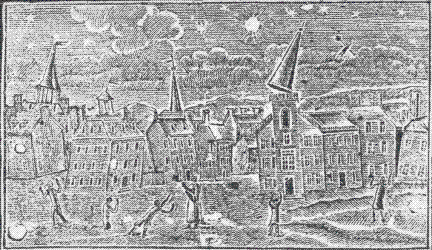
Abraham Lincoln never set foot in Vermont, and yet in the picturesque town of Manchester, you can find an impressive collection of Lincoln family memorabilia at Hildene, the estate of the president’s son, Robert Todd Lincoln.
Hildene, one of the homes featured in our newly released book, New England’s Historic Homes & Gardens by Kim Knox Beckius, is a wonderful place to visit any time of year, with hayrides in the summer, snowshoeing in the winter, and tours of the fascinating historic house offered year-round.
In 1902, desiring a country estate, Robert Todd Lincoln purchased 500 acres in Manchester, having vacationed with his mother and brothers at the Equinox Hotel in his youth. Three years later, the 24-room Georgian Revival mansion was complete. Though Hildene was a summer home for Robert, his wife, and their eldest daughter, Mamie, following their deaths, it became a full-time residence for granddaughter Peggy. Peggy and her brother, Bud, were the last of the Lincoln line, and currently the house and its 412 acres of garden and farmland are maintained by the Friends of Hildene.
The house shows the personal touches of the multiple generations of the Lincoln family who inhabited the house for seven decades. Guests to the house can visit Robert’s personal observatory; walk through Mary’s formal garden, planted in 1907 and still featuring many original plantings; and see the Pullman Sunbeam luxury train car, made while Robert was president of the company and installed at Hildene this past summer. Take a look at the presidential memorabilia displayed around Robert’s bedroom, including one of only three remaining stovepipe hats worn by President Lincoln.
As you walk through the entrance hall of the house, take note of the player pipe-organ, a gift from Robert to his wife, Mary. The organ still plays tunes from the 242 original music rolls, which were digitized when the organ was restored in 1980 after forty years of silence. If you visit in the month of December, the pipe organ will be playing carols, as the house is decorated for Christmas in Victorian style, as it might have been when Robert and Mary stayed there for the holidays.

If you go…
Hildene
1005 Hildene Rd
Manchester, VT 05254
802.362.1788
Drive time from Boston: 3 ½ hours
Drive time from Hartford: 2 ½ hours
Drive time from Albany, 1 ½ hours
Interested in learning more about Hildene and the Lincolns? Pick up a copy of New England’s Historic Homes & Gardens at one of these recommended bookshops in the area:
Northshire Books, Manchester VT
Misty Valley Books, Chester VT
Bennington Bookshop, Bennington VT
Places to Eat:
Spiral Press Cafe: Grab a book and relax while refueling at this cafe inside Northshire Books.
Christos Pizza: Pick up a slice in Manchester Center.
Perfect Wife: Cozy up to the bar at the Tavern or relax with a nice glass of wine at this Manchester stand-by.
Chantecleer: Looking for a white tablecloth experience in the Green Mountains? Head to this destination dining spot in East Dorset, Vermont.
OR, make a weekend out of it and stay in the famed Equinox Hotel, where you can experience fine dining and hospitality—and where you can take Land Rover off-roading driving lessons or experience the unique British School of Falconry in the Hildene Meadows while you’re there! The Equinox Hotel has a fascinating history in its own right: read here for more details.
A HUGE thank you to Stan Hynds from Northshire Books for these great suggestions!
This post is part of a larger series celebrating the sites included in our latest title, New England’s Historic Homes & Gardens, by Kim Knox Beckius with photography by William H. Johnson. See last week’s post on the William Cullen Bryant Homestead for more fun fall getaway ideas!





